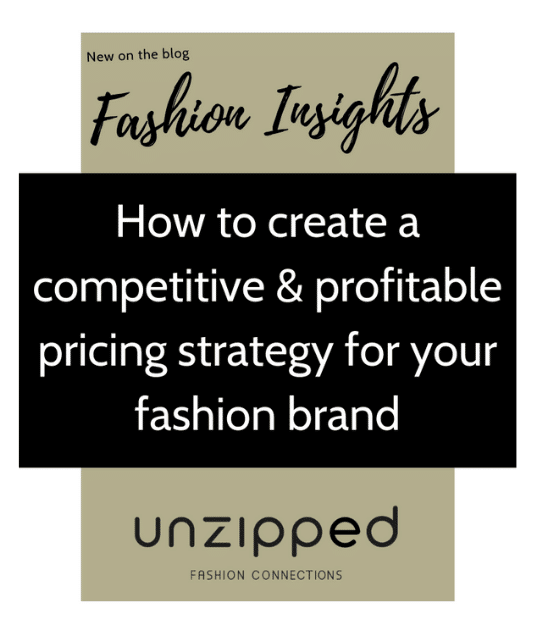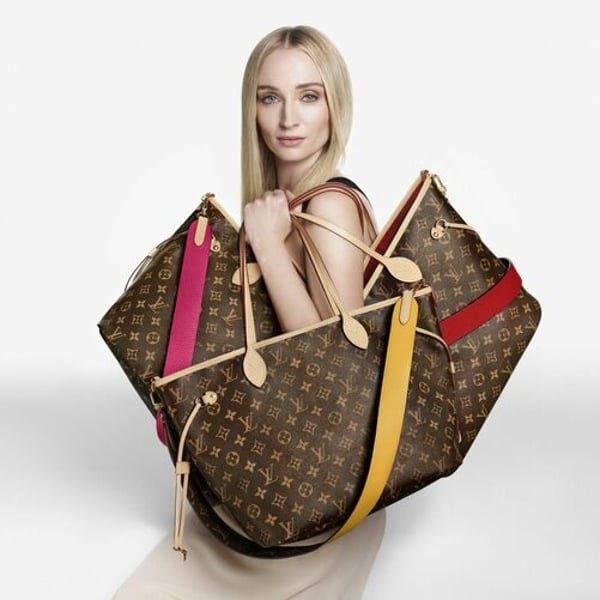Great. So that’s step two complete.
So now you have a comparison, you know, the entry and exit price point. You know, you are competitive by category in your fashion brand.
Step three is to gain your operational costs.
So it’s either going to be quotes if you’re a startup and you haven’t launched yet, or it’s going to be the actual cost.
If you’re a fashion brand, and this is now where we’re going to progress into checking if you’re profitable. So one tip I recommend I’ve got this great blog post, which is how to sell into new markets, which will give you pointers on the UK, Europe, us as well as Australia so that you can understand more around costs and going into new markets, but pretty much what you need right now are local the operational costs listed on the screen.
So the cost of goods is the actual cost of the garment itself. Duty in whatever country you’re going into, VAT taxes, whatever country you’re going into, the freight, the storage warehouse costs labelling cost packaging. This is every single cost involved in producing, shipping and delivering that product.
You now need to know these to actually find out if your pricing is going to be both competitive as well as profitable.
So let me show you this step.
So now we’ve moved into a different table. So this table is now going to look at your specific line by line collection, your products. So I’m obviously making these up for this, that the Carley shirt.
So this specific shirt, we would refer back to the pricing analysis that you’ve done so here, and we can see that your. Proposed competitive price points were 45 AUD and 85 AUD. That’s what you need to price your product app to be competitive versus your competitors. So here we can see the Carley shirt is at 80 AUD so it’s towards the top end.
It’s an expensive shirt.
What you now need to do is to enter your COGS and all of the costs into a spreadsheet, similar to this. So pretty much your retail price, the price that you want to sell out because you think you’re being competitive. You think a product’s worth that price and you need to know the actual cost of goods.
You need to then know the freight, the additional costs, and, anything else around the packaging? All of those costs that I listed on the other sheet, you now need to enter these here and you need to then column by column. It’s going to calculate what the landed margin is. So that’s this column here. So take your cost price at your freight.
Shipping costs duty, in this case, is not applicable additional costs, packaging, labels, et cetera, and then actually calculate the total cost of that. Individual style, that shirt, Carley shirt, this is the total cost. It’s going to cost you to make it, to ship it, to deliver it. And now what you’re looking at is how much margin, how much profit are you going to make?
If it costs you 40 AUD and you’re going to sell it at 80. So here we can see it’s pretty much 50%. That’s the margin you’re going to make. And I can tell you right now, but that’s not going to make you profit. Well, that much profit, if you’re just selling your product by your own direct consumer. The full there are no additional costs.
You are just purely selling DTC via your website. You’re not shipping anywhere else. There’s no wholesale deals, commission, etc you may be okay to accept a 50% margin.
That’s actually, okay.
It’s not the end of the world, but I would like to advise you that if you have ambitions to sell globally overseas, etc, that you want to be striving to achieve a 70% landed margin.
This is what the likes of New Look and Forever New, all of the big fashion brands that they would be striving to achieve the greater the margin.
Obviously, the greater the profit, but also if you’re achieving a base margin of 70% now in your current pricing strategy, whatever stage or at this gives you then the ease to move into wholesale a lot easier because you’ve got more margin to give away, so to speak.
So I’d encourage you right now. That line by line all the products that you’re looking at based on your competitor price points, what we just looked at, enter the price point that you think it’s worth, that it can sell that to be competitive. Enter these prices.
So this is either going to be an actual price, or it’s going to be a quote, an estimate and calculate your landed margin.
So, as I mentioned, overall, you’re striving for 70%. So that is pretty much the goal.
This is how you check if your price points are competitive. That is actually going to drive profit and a tip that every single individual item doesn’t have to achieve 70% overall if your collection achieved 70%.
Perfect.
So some could be 76%, some could be as little as 60%, but overall, if your overall collection margin is 70%, then that means you can afford to lose on a few because you’re going to overachieve on others.
So that’s the goal.
And to explain for those of you that are considering wholesale. The reason why I’m saying 70% is let’s say if you’re selling to Zalando, Zalando can ask for up to 75% off your RRP, their take-home wholesale price.
So in this scenario, if you deduct 70%, so you’ve sold it to Zalando for 80 AUD you’re only going to take home 24 AUD because they’re going to take home the 70% of that selling price.
Therefore, if your product costs you 40 AUD to make and you only then sold it to Zalando in wholesale for 24 AUD, you’ve made a loss of 60 AUD. So that’s why you can see in the example below when you achieve a landed margin of 70%. With the exact same calculation you take off the wholesale margin, you then would be just marginally profitable.
70% W/S that I’ve used as an example is pretty high and hopefully, you’d want to agree to a deal that’s less than that, but this is a scenario, I’m showing you, that you need to now calculate and play around with to make sure that you get your price points. Your retail price is correct.
Now, even if you’re not dealing with wholesale, you want to pretty much make sure that your. The landed margin is 70%, which will make you profit when your direct to consumer business, as much as in the future, profitable with wholesale.







